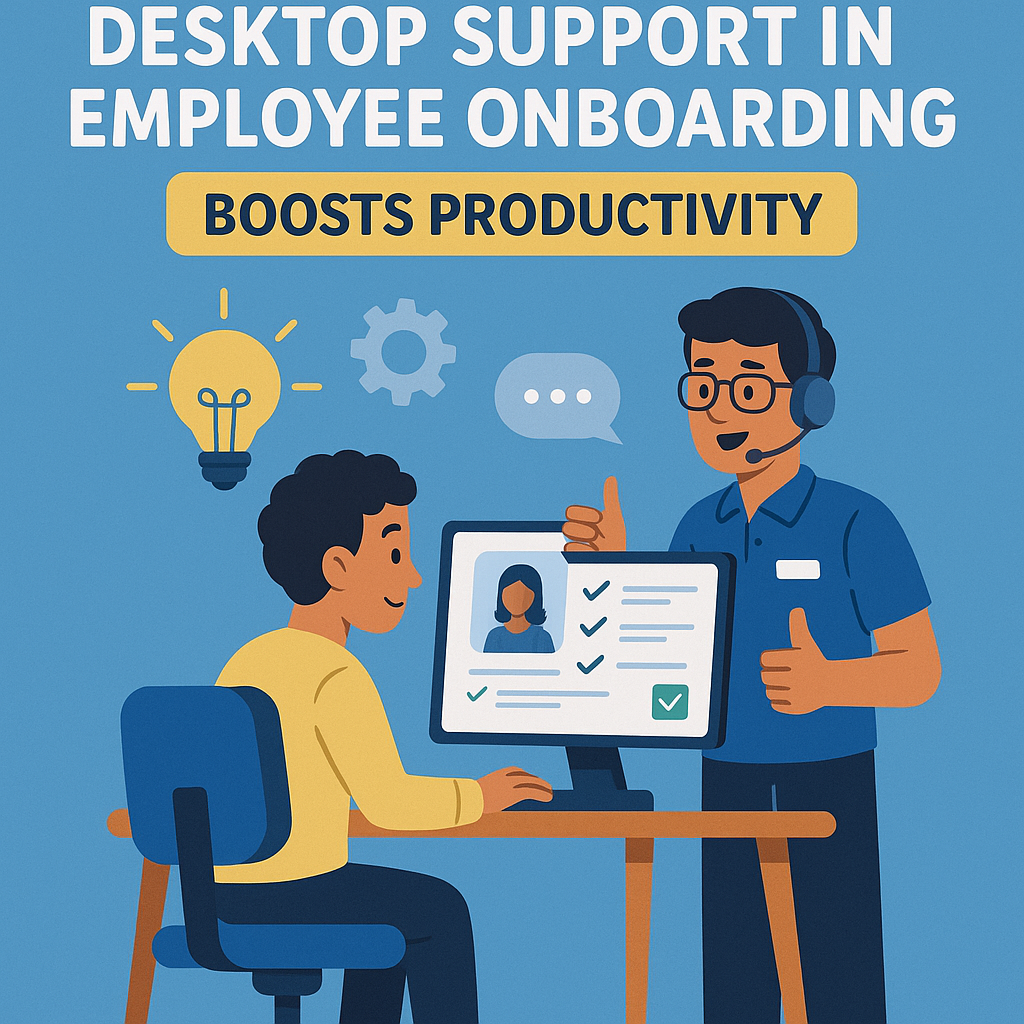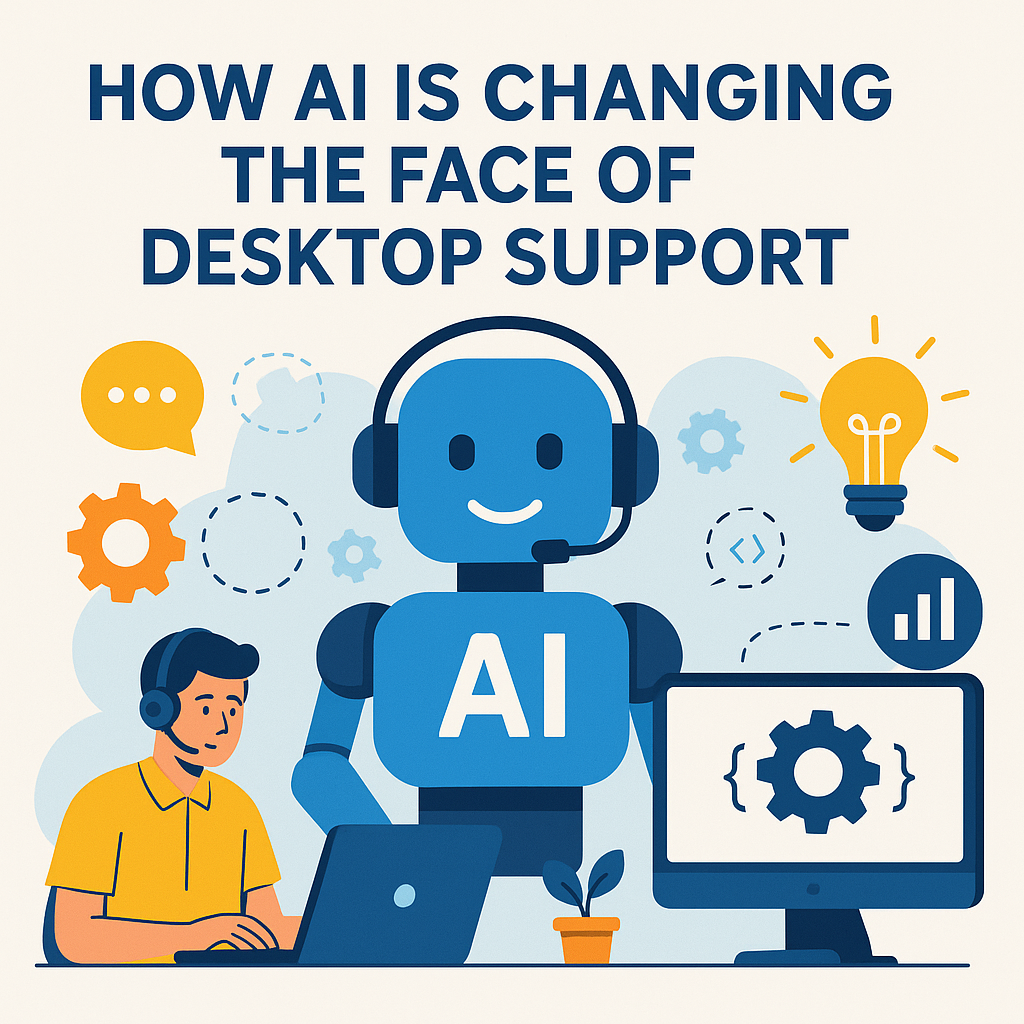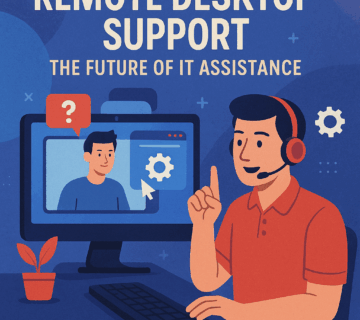Top Desktop Support Hurdles and Expert Ways to Tackle Them

Efficient desktop support is essential for ensuring smooth operations within any organization. However, IT teams often face significant challenges when supporting end users’ hardware and software needs. In this guide, we delve into the most common hurdles encountered in desktop support and outline expert strategies for overcoming them.
1. Hardware Failures and Incompatibilities
The Hurdle: Desktop systems are prone to wear and tear. From failing hard drives to outdated components, hardware issues can disrupt productivity. Additionally, compatibility issues between new peripherals and legacy systems can complicate support.
Expert Solutions:
- Regular Maintenance and Upgrades: Establish proactive maintenance schedules to replace aging hardware before failures occur.
- Standardization: Adopt standardized hardware configurations to minimize compatibility issues.
- Vendor Partnerships: Leverage vendor support programs and warranties for rapid replacements and repairs.
2. Software Glitches and Incompatibilities
The Hurdle: Frequent software updates, conflicts between applications, and legacy software compatibility issues can lead to frequent disruptions in desktop performance.
Expert Solutions:
- Robust Testing Protocols: Test new software updates in a controlled environment before rolling them out organization-wide.
- Centralized Management Systems: Use software deployment and management tools to maintain version consistency.
- User Training: Empower end users with basic troubleshooting skills to reduce minor software-related support tickets.
3. Security Threats and Data Vulnerabilities
The Hurdle: Desktop environments are often a target for cyber threats. Phishing attacks, malware, and ransomware can compromise sensitive data and disrupt operations.
Expert Solutions:
- Comprehensive Security Policies: Implement and regularly update security policies that include endpoint protection, regular antivirus updates, and intrusion detection systems.
- User Awareness Programs: Conduct regular security training to help employees identify and avoid potential threats.
- Regular Backups: Ensure that critical data is backed up consistently and can be restored quickly in case of a breach.
4. Remote Access and Support Complexities
The Hurdle: With the rise of remote work, IT teams face challenges in delivering timely support when users are not physically present in the office. Connectivity issues and varying home network setups add layers of complexity.
Expert Solutions:
- Remote Management Tools: Invest in robust remote desktop management software that allows IT teams to troubleshoot and resolve issues without physical access.
- Secure VPNs: Establish secure Virtual Private Networks (VPNs) to ensure that remote connections are safe and reliable.
- Clear Communication Channels: Set up dedicated helpdesk communication channels to streamline remote support requests.
5. User Error and Inadequate Training
The Hurdle: Many desktop support issues arise from user error. Misconfigured settings, accidental deletions, and lack of knowledge on proper system use can lead to recurring problems.
Expert Solutions:
- Regular Training Sessions: Offer periodic training sessions and create comprehensive documentation or video tutorials for common tasks and troubleshooting steps.
- Self-Service Portals: Implement user-friendly self-help portals where employees can find solutions to frequent issues.
- Feedback Loops: Encourage users to provide feedback on support services to identify recurring issues and tailor training accordingly.
6. Managing Diverse IT Environments
The Hurdle: Modern workplaces often have a mix of operating systems, devices, and applications. This diversity can overwhelm support teams and complicate the troubleshooting process.
Expert Solutions:
- Unified Endpoint Management (UEM): Utilize UEM tools that offer a single dashboard to manage all endpoints, regardless of their operating system or device type.
- Cross-Platform Expertise: Invest in cross-training for IT staff so that they are proficient in multiple platforms and can provide more comprehensive support.
- Documentation and Standard Procedures: Develop clear, standardized procedures for handling common issues across different systems.
7. Enhancing Support with Comprehensive Server Management
While desktop support is critical, it’s equally important to ensure that server environments are robust and secure. Combining desktop troubleshooting with comprehensive server solutions creates a more resilient IT infrastructure.
- Proactive Server Management: Just as proactive desktop maintenance is key, proactive server management helps detect potential issues early, ensuring that server performance remains optimal.
- Professional Server Support: Engaging with professional server support services can offer expert guidance, especially when dealing with complex server configurations or critical data management.
- Outsourced Server Support: For organizations without in-house expertise, outsourced server support provides a cost-effective alternative, allowing businesses to access reliable server solutions without the overhead of a dedicated team.
- Regional Expertise: Local providers, such as those offering IT support in Irvine or tailored IT support Irvine services, can deliver personalized service and faster response times, further enhancing the stability of your IT environment.
- Reliable Server Solutions for Businesses: By integrating reliable server solutions for businesses into your overall IT strategy, organizations can ensure both individual workstations and central servers are running efficiently.
Frequently Asked Questions (FAQs)
Q1: What are the most common desktop support issues faced by organizations?
A: Common issues include hardware failures (e.g., hard drive malfunctions), software glitches, security breaches, difficulties with remote access, and user errors due to lack of proper training. These problems can disrupt business operations if not addressed promptly.
Q2: How can proactive maintenance help reduce desktop support issues?
A: Proactive maintenance involves regularly updating hardware and software, monitoring system performance, and scheduling routine checkups. This approach helps identify potential issues before they become critical, reducing downtime and repair costs. Similar proactive server management practices also ensure that server environments remain stable.
Q3: What tools can improve remote desktop support?
A: Remote desktop management tools and secure VPNs are essential for effective remote support. These tools allow IT teams to access and troubleshoot user systems remotely, ensuring issues are resolved quickly without the need for physical access.
Q4: How can organizations improve user training to minimize support tickets?
A: Organizations can conduct regular training sessions, create detailed user guides, and offer self-service portals that provide step-by-step troubleshooting instructions. Empowering users with basic IT knowledge helps reduce the volume of support tickets.
Q5: What role does standardization play in desktop support?
A: Standardization of hardware, software, and procedures simplifies the support process. When systems are uniform, IT teams can resolve issues more efficiently, and training materials remain consistent, reducing the complexity of troubleshooting diverse environments.
Q6: How can IT teams ensure that security measures are effective in protecting desktop systems?
A: By implementing comprehensive security policies, regularly updating antivirus and firewall software, conducting employee security training, and performing frequent data backups, IT teams can build a robust defense against cyber threats.
Q7: How do server support services complement desktop support?
A: Reliable server solutions for businesses depend on both desktop and server support. Engaging in professional server support or opting for outsourced server support can help address complex server issues. Additionally, localized IT support in Irvine provides tailored solutions that bridge the gap between desktop troubleshooting and server management.
This guide provides a detailed look at the hurdles faced in desktop support and actionable strategies to overcome them. By embracing proactive measures, investing in the right tools, and empowering users through education—as well as integrating comprehensive server management—organizations can enhance system reliability, ensure robust performance across all IT areas, and boost overall productivity.




No comment